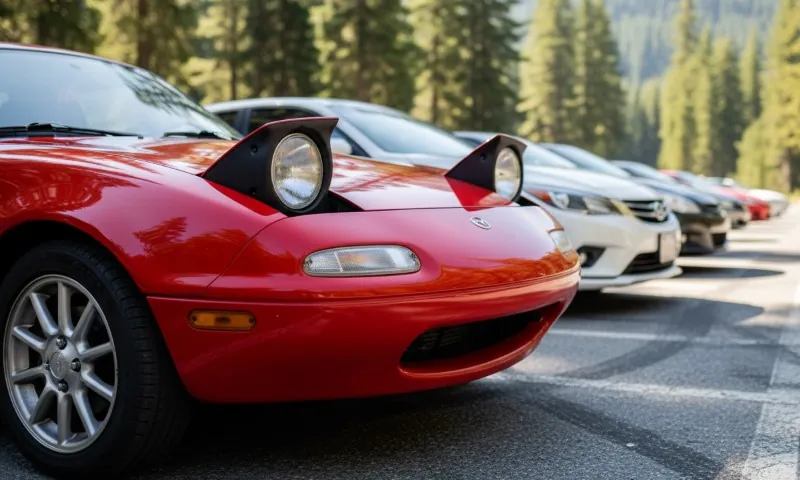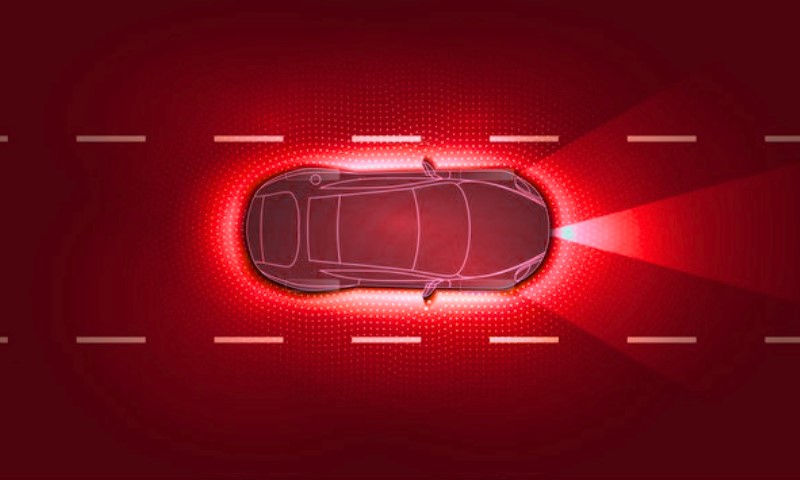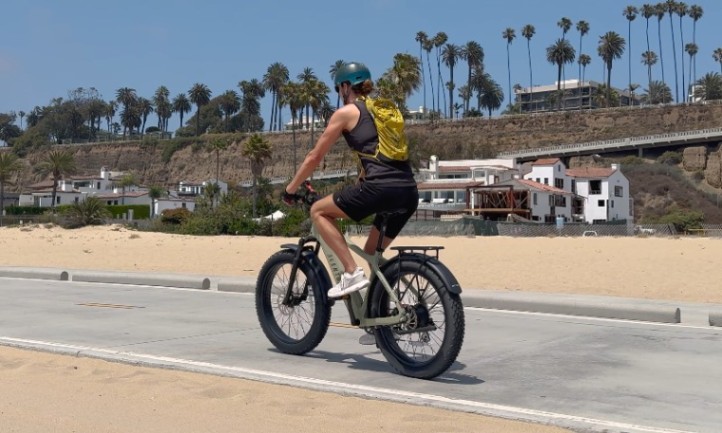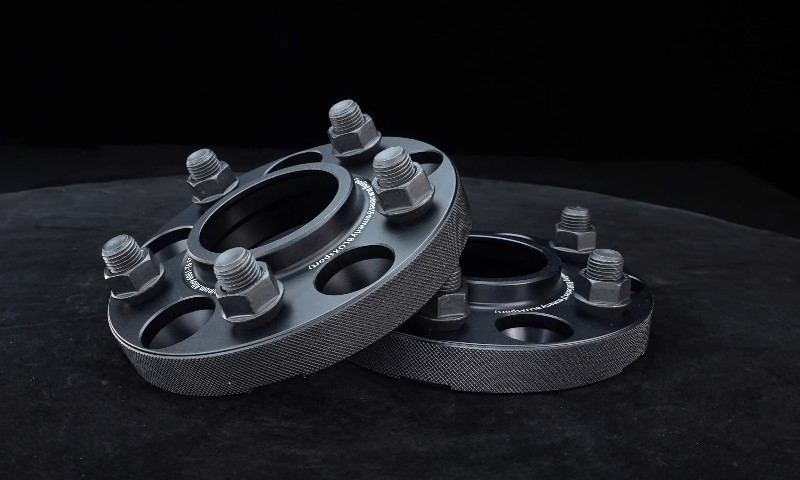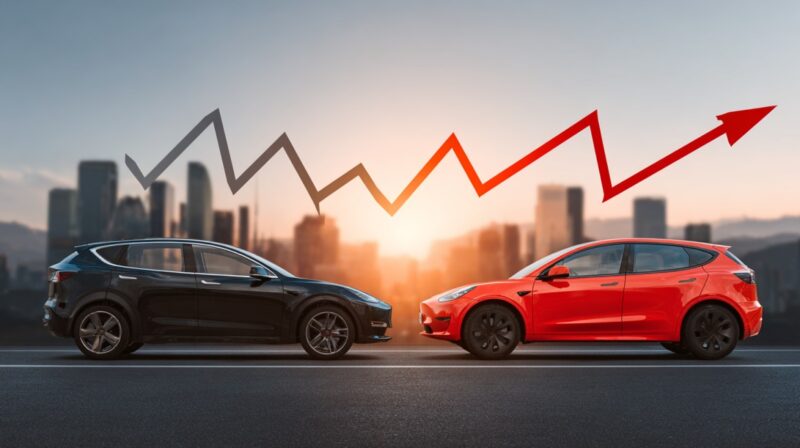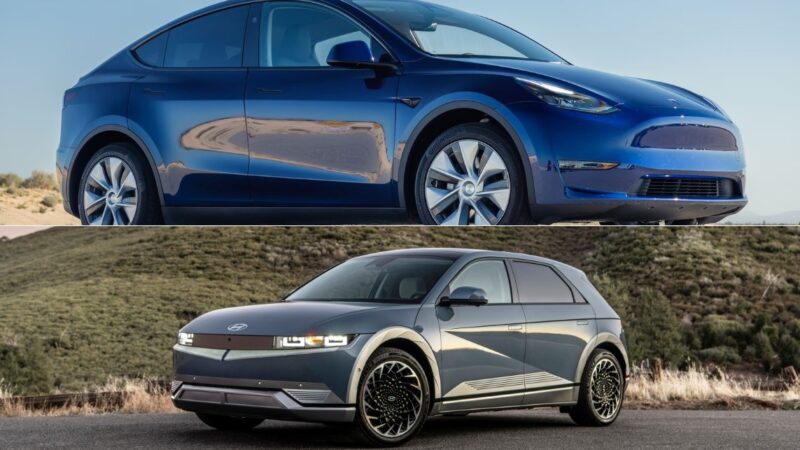
Share Post:
Electric SUVs aren’t just for early adopters anymore. They’re for road-trippers who want quiet cabins, commuters tired of gas prices, and families looking for that blend of comfort and innovation.
And at the center of this shift are two standout options: the 2026 Tesla Model Y and the 2025 Hyundai Ioniq 5. On paper, they seem like natural competitors—similar price points, both fully electric, both geared toward modern drivers.
But when you really get into what it’s like to own and drive one day-to-day—how far they go, how fast they charge, and how they feel behind the wheel—their personalities start to show.
Let’s unpack that.
Table of Contents
ToggleReal-World Range

When someone asks about an EV, the first question is usually, “How far does it go on a charge?” It’s a fair question.
But those big EPA numbers slapped on the window sticker don’t always tell the full story.
EPA vs. Reality
| Model | Drivetrain | EPA Range (mi) | WLTP Range (mi) |
| Tesla Model Y Long Range AWD | AWD | 320 | 320 |
| Hyundai Ioniq 5 Standard RWD | RWD | 245 | 273 |
| Hyundai Ioniq 5 Long Range RWD | RWD | 318 | 329 |
| Hyundai Ioniq 5 Long Range AWD | AWD | 290 | 311 |
On paper, Tesla’s Model Y Long Range holds the edge, especially if you’re going with all-wheel drive. But those numbers don’t always hold up in the real world.
In cold-weather testing (think highway speeds at 16°F), the Model Y logged 186 miles, while the Ioniq 5 came in just behind at 183 miles.
Now, the interesting part? That Ioniq 5 had a lower EPA rating of 256 miles, meaning it retained a greater percentage of its promised range—71.5%, compared to the Tesla’s 60%.
So while Tesla technically goes farther in raw distance, the Ioniq 5 handles tough conditions a bit more efficiently. If you’re in the Northeast or Midwest, that could matter more than 10 or 20 extra miles on a warm spring day.
Charging
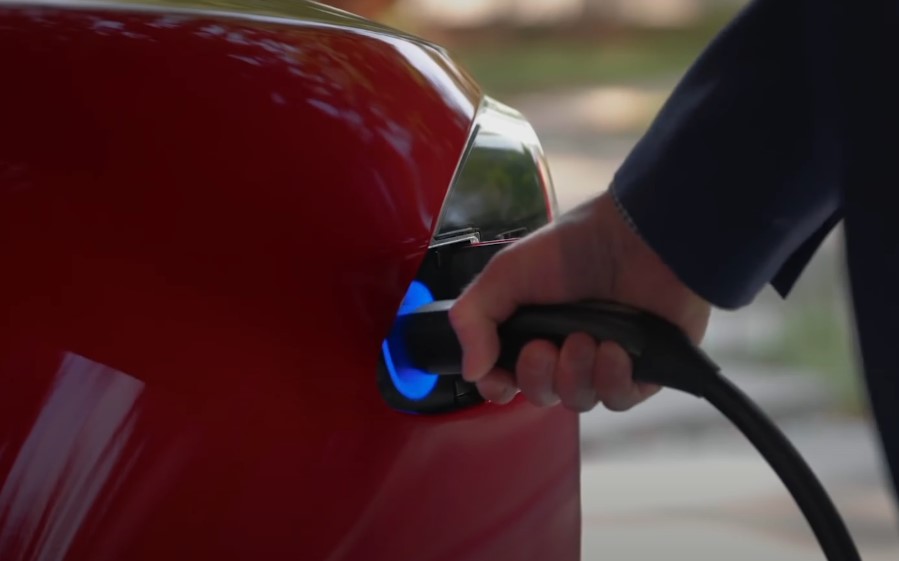
You can have all the range in the world, but if your car takes forever to recharge, it starts to feel like a tradeoff. Here’s where Hyundai really flexes.
Charging Speed Comparison
| Model | Charging Time (10-80%) | Max Rate |
| Tesla Model Y Long Range AWD | 27 minutes | 250 kW |
| Hyundai Ioniq 5 (All Variants) | 18 minutes | 350 kW |
Tesla’s 400-volt setup is no slouch, but it needs about 27 minutes on a 250-kW Supercharger. If you’re someone who regularly takes road trips, that nine-minute difference adds up—especially if you’re doing it more than once a month.+
Who Squeezes the Most Out of Each Electron?
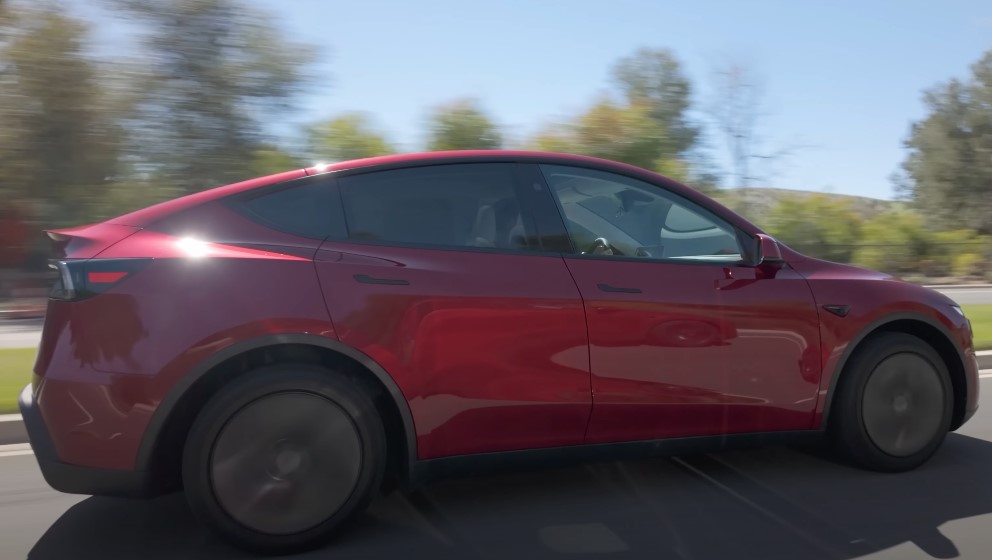
This is the nerdy part, but it’s worth noting—especially if you care about how often you’ll need to plug in.
MPGe Ratings
| Model | MPGe (City/Hwy) | Average |
| Tesla Model Y SR RWD | 129 / 112 | 96 |
| Tesla Model Y Long Range AWD | 127 / 109 | 93 |
| Hyundai Ioniq 5 SR RWD | 127 / 94 | 90 |
| Hyundai Ioniq 5 LR AWD | 110 / 87 | 81 |
Tesla’s got the edge here. The Model Y just does more with the energy it’s given. But it’s not a landslide.
Hyundai closes the gap with faster charging and solid real-world performance. So while Tesla’s sipping electrons more efficiently, Hyundai’s catching up on the backend.
Futuristic vs. Familiar
Both SUVs come packed with tech—but the way they approach it couldn’t be more different.
Tesla Model Y (2026)
Tesla bets hard on the “one screen does it all” approach. The massive 15.4-inch center screen is your command station—no gauges behind the steering wheel, no dedicated climate controls.
Love it or hate it, it’s part of the Tesla identity. New in 2026 is an 8-inch rear display so passengers can adjust their own settings. Plus, you’ve got Tesla-exclusive features like:
- Full Self-Driving (FSD) (driver still needs to be alert)
- Smart Summon & Autopilot
- Dog Mode, Sentry Mode, Camp Mode
- Over-the-air updates for new features
- Exclusive Supercharger access
It’s a tech-lover’s playground—but it assumes you’re okay with ditching physical buttons.
Hyundai Ioniq 5 (2025)
Hyundai goes for balance. You still get dual digital displays, but with physical knobs and climate buttons where they make sense. You also get:
- Apple CarPlay and Android Auto (still not available in Teslas)
- Hyundai Digital Key 2 (use your phone to unlock and drive)
- Smart Parking Assist + Parking Collision Avoidance
- OTA updates for software
- Supercharger compatibility (via NACS)
It’s not as showy, but for many drivers, it feels more approachable and less distracting.
Bottom Line on Tech
Tesla is more advanced on paper, especially if you’re into automation and future-looking features.
But Hyundai’s blend of modern tools with practical usability makes it the friendlier choice for a broader audience.
Cabin Space, Ride Feel & Everyday Practicality
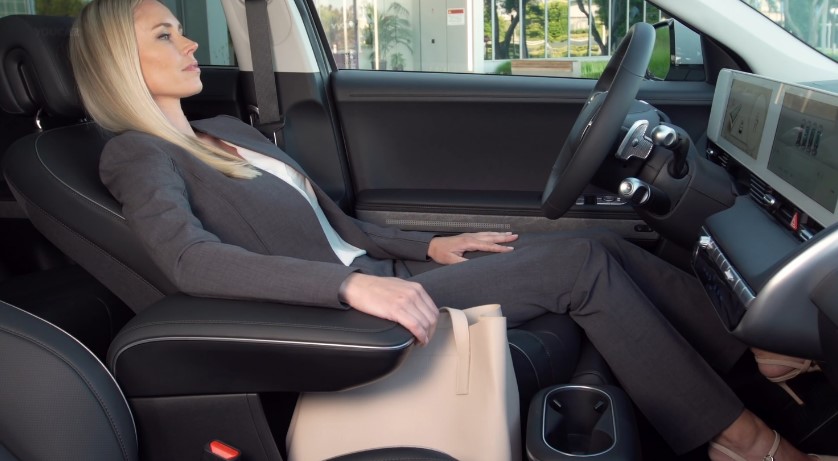
We’re not all racing to 60. Sometimes you just want to relax on the way to school pickup—or have room for a weekend haul from IKEA.
Interior Space Breakdown
| Aspect | Model Y | Ioniq 5 |
| Wheelbase (inches) | 113.8 | 118.1 |
| Headroom (Front/Rear) | 41.0 / 39.4 (est.) | 39.8 / 38.7 |
| Legroom (Front/Rear) | 41.8 / 40.5 (est.) | 41.7 / 39.4 |
| Shoulder Room (Front/Rear) | 56.4 / 54.1 | 58.0 / 57.1 |
| Hip Room (Front/Rear) | 53.8 / 50.6 | 55.6 / 55.3 |
| Cargo (Seats Down) | 76.2 cu ft | 58.8 cu ft |
The Model Y has a clear advantage when it comes to cargo space. It also has a front trunk (frunk), which the Ioniq 5 lacks. If you’re hauling gear, camping equipment, or Costco hauls, Tesla might be the better utility pick.
That said, the Ioniq 5 gives passengers more room to breathe—especially across the shoulders and hips.
The longer wheelbase helps it glide over bumps with a smoother, more composed ride, which many reviewers have praised, especially on rougher pavement.
Creature Comforts & Interior Touches
- Tesla Model Y: Redesigned dashboard, ambient lighting, quieter cabin insulation, upgraded audio, and a high seating position. Some trims might offer third-row seating.
- Hyundai Ioniq 5: Glass roof (with sunshade), new center console, revised bumpers and climate controls, and available XRT trim with rugged flair. The vibe here leans lounge-like—great for long drives or recharging at a rest stop.
Which One Is Right for You?
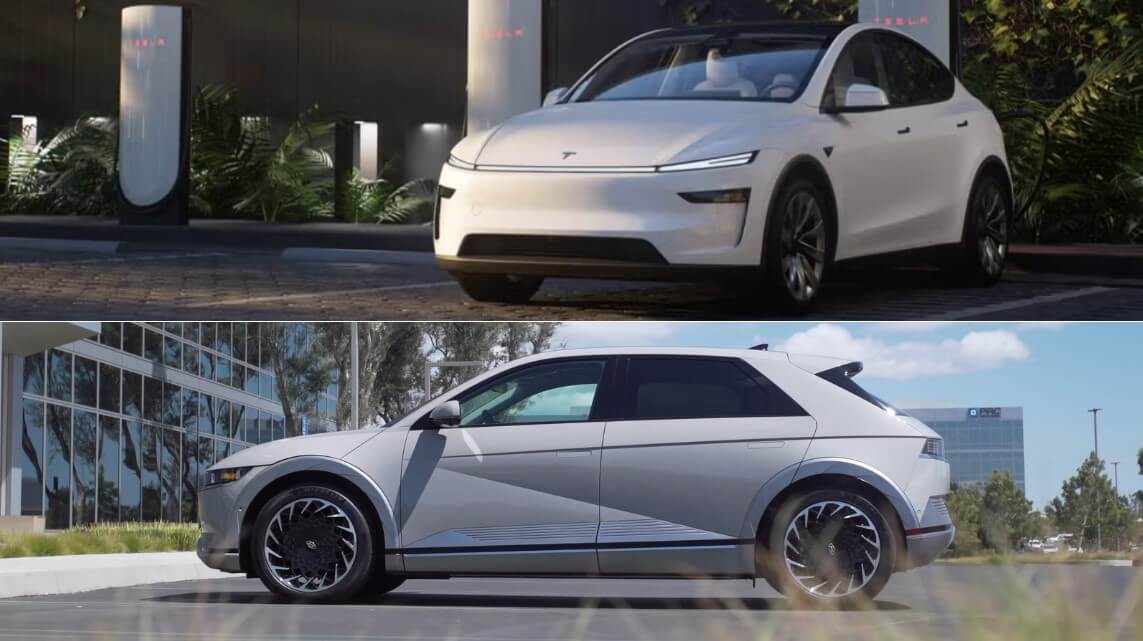
There’s no perfect answer—only the better match for your lifestyle. But here’s a quick cheat sheet:
| Feature | Better Option |
| Real-world Range (EPA edge) | Tesla Model Y |
| Charging Speed | Hyundai Ioniq 5 |
| Autonomous Features | Tesla Model Y |
| User-Friendly Tech | Hyundai Ioniq 5 |
| Cargo Capacity | Tesla Model Y |
| Rear Passenger Comfort | Hyundai Ioniq 5 |
| Ride Smoothness | Hyundai Ioniq 5 |
| Access to Superchargers | Tie (both compatible) |
Final Thoughts
The Tesla Model Y feels like it’s engineered for forward thinkers—the ones who want bleeding-edge tech, a minimalist driving interface, and top-tier performance across the board.
It’s fast, smart, and surprisingly practical for something that leans so futuristic. The Hyundai Ioniq 5, on the other hand, is about thoughtful balance. It charges faster, rides smoother, and makes tech feel like part of your life instead of a full-time job to learn.
And it’s surprisingly fun, especially in XRT trim. Your best bet? Try them both. Sit in the back seat. Test the charging speeds. Toggle through the infotainment system. One of them will feel more “you.”
Related Posts:
- Is Synthetic Oil Really Worth It? Pros and Cons Compared
- Can a Convertible Be Your Daily Driver? Assessing…
- 2025’s Best Cars for Tech Lovers – From AI Parking…
- How Long Does It Really Take to Charge a Tesla?
- Best Tesla Financing Options in 2025: Compare Lease,…
- 27 Longest Range EVs in 2025 - A Side-by-Side Comparison



